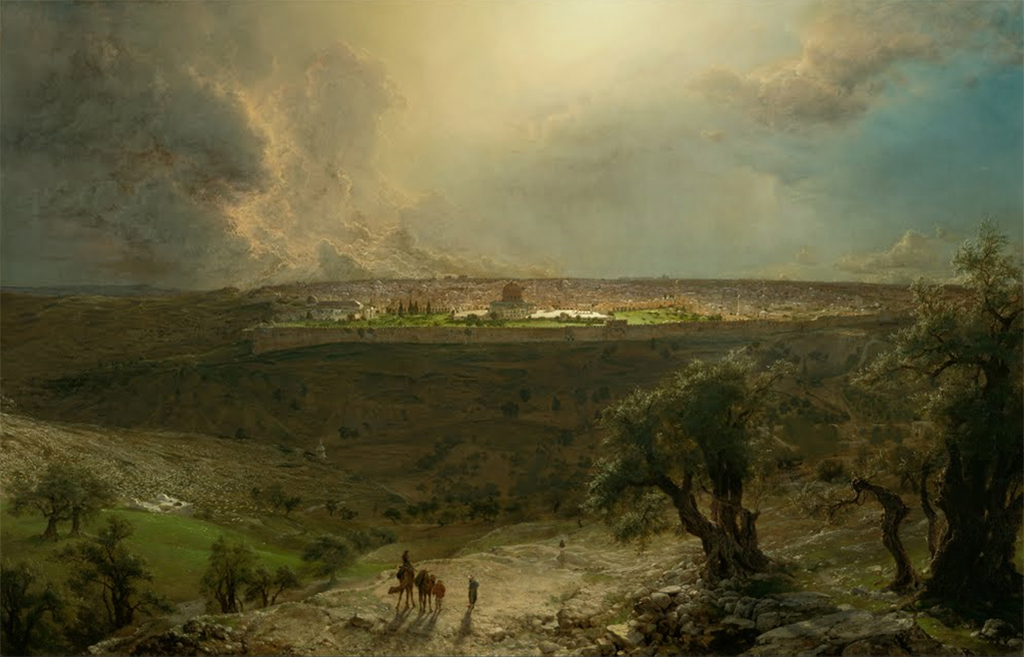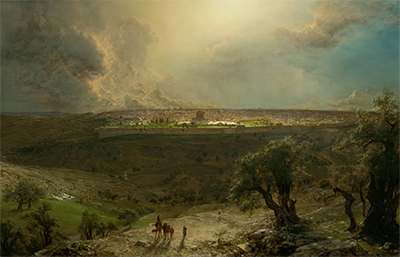To the lovers of art and painting, Jerusalem from the Mount of Olives by Frederic Edwin Church is a masterpiece of its own. Painted in 1870, the unframed painting is accessible from the Nelson-Atkins Museum of Art in Kansas City, United States.
The art is a representation of panoramic landscape showing the scenic view of the holy city of Jerusalem. The unique appearance and development of the painting were inspired by Frederic Edwin Church’s two-week visit to Jerusalem. A visit to Jerusalem and interaction with different works of art like photographs inspired him to draw. Jerusalem from the Mount of Olives presents chronologically arranged meaningful details about the holy city of Jerusalem. To portray holiness of the city, Frederic shows shinning white roofing extending towards the horizon within a dark, expansive, and cloud-filled sky.
The sky portrays bad weather during the time of the visit. At the forefront of the art, Jerusalem from the Mount of Olives shows scattered trees around mount olive, a place where Jesus was betrayed. In the middle of the forefront is travellers along a path which is significantly the path connecting Jerusalem and Bethlehem. The travellers are a replica and reminder of pilgrimage into Jerusalem during an earlier time. The pilgrimage was due to people visiting Jerusalem for personal, religious, and refuge purposes.
The artwork design shows plenty of details, some of which are viewed using spectacles. The content embedded in the art represents different special settings within the city of Jerusalem. Different landmarks are represented within the city. The art painting shows all important and special and religious centres (Christian and Islamic) with the centre of the painting showing the dome of the rock and the Aqsa Mosque. Behind the dome of the rock is white building roofs which extend from the middle towards the horizon. The painting considers key geographical contents from the forefront towards the horizon. The yellow-hued light geographic represented within the painting presents a hopeful and obscure mood, a characteristic of 17th-century religious art. The gleaming white building roofs in a dark, expansive bad weather add to the theme of hope.
Different personalities and institutions influenced church’s works, including but not limited to Hudson River School, John Ruskin, and Alexander Von Humboldt. Church's planning of Jerusalem from the Mount of Olives assumes the luminous landscape. The planning considers key geographical entities, richness, and beauty of nature. Edwin adopted the uncanny technique of painting. Through the technique, fine detailed pertaining to the holly city like religious areas and important scenic centre are availed. The structure and planning using the techniques avail a lot of fine details analyzable from the artwork. The painting has not been framed as per the original design.





